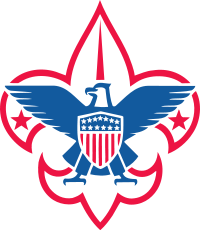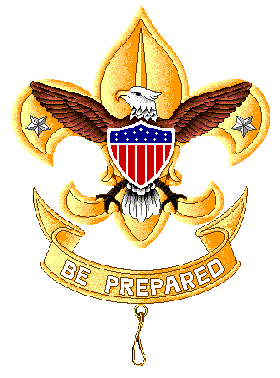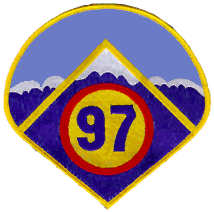 HOME—US Scouting—Boy Scouts of America
HOME—US Scouting—Boy Scouts of America
 Boy Scouts of America (BSA) (continued)
Boy Scouts of America (BSA) (continued)
Non-Traditional BSA Programs
Exploring (coed, for ages 10-20)
- A descendant of the earlier career-awareness Exploring program, now operating under Learning for Life (BSA affiliate) since 1998
- Exploring is a non-traditional, work-site-based program.
- Explorers are not required to adhere to the Scout Oath or Law, and membership is open to any youth subject to the age restrictions.
- Note that what was for many years called "Exploring" is now generally covered in the Venturing program.
- Girls and young women constitute 39% of Explorers (2/2018).
- Coed Explorer posts serve youth aged 14 to 20. And since 2013, coed Explorer clubs serve middle school youth aged 10 to 13 (grades 6 through 8). Both clubs and posts offer interactive character and career activities facilitated by trained business leaders.
- As of 12/31/2019, Exploring youth membership totaled 101 243, a 7.6% decrease (-8370 youth) during 2019.
Learning for Life (LFL) (coed, for grades K-12)
- BSA affiliate since 2013 (formerly considered a BSA subsidiary), started in 1991
- Learning for Life is a non-traditional, coed, classroom-based character education program, with programs set up by grade:
Seekers (K-grade 2)
Discoverers (grades 3 and 4)
Challengers (grades 5 and 6)
Champions (special needs)
Builders (grades 7 and 8)
Navigators (high school)
- LFL members are not required to adhere to the Scout Oath or Law, and membership is open to any youth subject to the age restrictions.
- As of 12/31/2019, Learning for Life youth membership totaled 145 462, a 54% decrease (-167 558 youth) during 2019. BSA is considering discontinuing the LFL program.
STEM Scouts (coed, for grades 3-12)
- Non-traditional BSA program separate from other BSA programs, started in 2015
- Grouped by elementary, middle, and high school ages
- Currently in expanded pilot phase in select Councils
- Meets weekly with monthly field trips; de-emphasizes outdoor program and focuses on STEM (Science / Technology / Engineering / Math), with 4- to 6-week learning modules
- Meetings open with the Scout Oath and Scout Law
- No rank advancement, but offers "electronic badges" for participation and achievement
- $250 to $275/person/year flat cost
- No uniform, but T-shirts and lab coats are available
- Girls and young women constitute 45% of STEM Scouts (6/2018).
BSA Program Summary
Traditional
Programs |
Year Started |
Grade/Age Range |
Term for Youth Member |
Term for Unit/Sub-units |
| Cub Scouts BSA |
1930 |
grades K-5 |
Cub Scout (grades K-3)
Webelos Scout (grade 4)
Arrow of Light (AOL) Scout (grade 5) |
pack/dens |
| Scouts BSA |
1910 |
age 10/11-17 |
Scout |
troop/patrols |
| Sea Scouts BSA |
1912 |
age ~14-20 |
Sea Scout |
ship |
| Venturing BSA |
1998 (1935) |
age ~14-20 |
Venturer |
crew |
Non-Traditional
Programs |
Year Started |
Grade/Age Range |
Term for Youth Member |
Term for Unit/Sub-units |
Exploring
[younger youth] |
2013 |
age 10-13
(grades 6-8) |
Explorer |
club |
Exploring
[older youth] |
1998 |
age 14-20 |
Explorer |
post |
| Learning for Life |
1991 |
grades K-12 |
6 terms based on grade |
group |
| STEM Scouts |
2015 |
grades 3-12 |
STEM Scout |
laboratory or lab |
Special Notes
Discontinued or Renamed BSA Programs
- Air Scouting/Air Explorers—separate aviation-focused program started in 1941 as Air Scouting, renamed Air Exploring in 1949; ended and merged into the overall Exploring program in 1965 as the 'Aviation Explorers' specialty
- Boy Scouts—common term for boys in the Boy Scouting section. With the admission of girls in 2019, the program name was changed from 'Boy Scouting' to 'Scouts BSA', and all youth (male & female) are now called Scouts
- Cubbing/Cubs—original name (1930) of the younger-boy program and its members, changed in 1948 to the Cub Scout program and Cub Scouts
- Explorer Scouts—original term for older boys in the Explorer program (1935); youth members called simply Explorers starting in 1949
- Leadership Corps—special patrol with special uniform shirts & insignia for 14-15 year-old Scouts from 1972 to 1989
- Sea Explorers—name for Sea Scouts from 1949 to 1998
- Tiger Cubs—former name for the BSA's version of Canada's Beaver program for boys younger than Cub Scout age, begun in 1982; in 2015 BSA created the Tiger rank and fully integrated that age group into Cub Scouts
- Varsity Scouting—LDS-originated program for older Scouts (see below) from 1984 to 2017
- Venture Scouts—term for Scouts age 14 & up (replaced Leadership Corps) from 1989 to the early 2000's when BSA quietly dropped the term due to its confusion with the unrelated Venturing program; Venture Scouts could form their own Venture crew to do high adventure activities
Church of Jesus Christ of Latter-day Saints
(also known as 'LDS' or 'Mormon' church)
- The LDS church officially adopted the programs of the BSA as the church's youth program for its boys in 1913. While many churches support and sponsor BSA units, the LDS involvement was unique. It meant that every LDS ward (church) had BSA units with leaders appointed by the bishop (leader of the ward), and that most LDS boys went through Cub Scouts, Boy Scouts, and one of the high-school-aged BSA programs. Ultimately over 20% of all BSA youth belonged to LDS-sponsored units.
- Around 2016, the LDS church decided to create its own youth program for its boys. As a result all church wards ceased sponsoring Sea Scout ships and Venturing crews effective 31 December 2017, and ceased sponsoring Cub Scout packs and Boy Scout troops effective 31 December 2019. Although LDS youth may still join 'regular' BSA units, this number will likely be a small fraction of the number formerly involved in the BSA.
- Varsity Scouting—Developed in the early 1980s by the LDS church, Varsity Scouting was approved by the BSA in 1984. The church was experiencing a high dropout rate in its Explorer posts and was anxious to find a more effective way to keep its high school young men in Scouting (and perhaps to avoid the now-coed Exploring programs). Varsity Scouting was an optional sports-oriented program for older boys. Although officially available to all Scouting sponsors, Varsity Scouting overwhelmingly remained an LDS program throughout its existence. Varsity teams were separate from the troop (although there was a brief period when older Scouts could also do Varsity activities within a troop). Varsity Scouting offered sports programs and sports terminology (boys belonged to a squad, which was part of a team led by an adult coach and a boy captain). After the LDS church ceased sponsorship of Varsity Scouting at the end of 2017, the BSA quietly dropped the program.
Girls in the BSA
- Note that as of 2019, the BSA offers either coed or separate single-gender programs for both boys and girls from Kindergarten through age 20. [The unrelated Girl Scouts of the USA continues to offer separate, girl-only programs.]
- Cub Scouts opened to girls in 2018. Cub Scout packs can choose to be for boys only, for girls only, or mixed. Dens in a mixed pack ("family pack") can be any combination of single-gender and coed dens. Coed dens were officially allowed starting mid-2023. All Cub Scout handbooks and program materials have been re-written to include gender-neutral terminology and photos of boy and girl Cub Scouts.
- Scout troops (formerly called Boy Scouting, now called Scouts BSA) opened to girls in 2019. Troops can be for boys only or girls only, but not mixed. A boys troop and a girls troop at the same chartered organization are officially called 'linked' troops and can share the same troop number and be operated by a single troop committee. The girls' program is identical to the boys' program, using the same advancement requirements. The Scout Handbook has now been divided into two identical versions that differ only in having gender-specific photos and drawings: the Scouts BSA Handbook for Girls, released in late January, 2019, and the Scouts BSA Handbook for Boys, released in January 2020. Now all youth members in troops are referred to as 'Scouts'. Note that the national organization is not changing its corporate name and remains the Boy Scouts of America.
- BSA indicates that there are about 150 000 girls in both Cub Scouts BSA and Scouts BSA (they don't break down the numbers). This means that roughly 7.6% of the youth of both programs are girls.
- Sea Scouts and Venturers (the BSA's high school and college aged programs) have been coed since 1971. Girls could be non-registered 'associate' members starting in 1969, and full registered members starting in 1971, though they couldn't begin earning the Eagle award until 2019. Today (as of 6/2018) young women constitute 40% of Sea Scouts and 36% of Venturers.
Eagle Scout Award
- The famous Eagle Scout award was created in 1911, and the first was awarded in 1912. Until as late as 1965 adult men could also earn the award. Starting on 1 February 2019, girls were allowed for the first time to begin working on the Eagle requirements, and the first female Eagle Scouts finished the award in mid 2020.
- Although the Eagle award is most associated in the public mind with Scout troops, Sea Scouts (formerly Sea Explorers, but originally also called Sea Scouts) and Venturers (formerly Explorers, and originally Explorer Scouts), plus members of the former Air Scouting/Air Exploring and Varsity Scouting programs could also earn Eagle. Even though Sea Exploring/Sea Scouting and Venturing/Exploring have been coed since 1971, female members were not allowed to begin earning Eagle until 2019.
- Today, all youth members of Scouts BSA can earn Eagle. In addition youth members (under age 18) in Sea Scouts and Venturing can also earn Eagle if they have earned First Class as a member of a Scouts BSA troop (which is a minor hurdle).
Order of the Arrow (coed, for elected youth & adults in the Scouts, Sea Scouts, & Venturing programs)
- The Order of the Arrow ("OA") started in 1915 as an unofficial, American-Indian-themed program to promote Scout camping and support of BSA summer camps (it was started by a camp director).
- The BSA officially adopted the OA program in 1948, and the OA has become the BSA's national honor society, promoting service to others (its official name is Brotherhood of Cheerful Service). Although originally tied strongly to supporting BSA summer camps, the OA today has fairly limited ties to BSA camps (primarily as a location for their Ordeal and service weekends).
- Membership was originally open only to Boy Scouts and Boy Scout adult leaders. Since 1988, adult women associated with Boy Scout troops could also join. Starting in 2019, the OA opened to female youth as it expanded its membership to all youth and adults within not only Scout troops but also Sea Scout ships and Venturing crews.
- Members are elected by their fellow Scouts/Sea Scouts/Venturers, and must complete a 'secret' "ordeal" to join. [The 'secrecy' is part of the attraction to youth, although parents and other adults can choose to learn any of the 'secrets' they wish, and in recent decades are allowed to attend formerly closed ceremonies.]
- Because the OA uses indian themes, costumes, dances, and ceremonies, some American Indians have objected to the program, accusing it of cultural appropriation. In recent decades, the OA has made efforts to be more culturally sensitive, which has helped them gain at least some support in the American Indian community.
- In the early decades of Scouting, various Scout Councils and camps started a number of local organizations similar to the Order of the Arrow. Of these, it appears only two survive to today: the Firecrafter organization, founded in 1920 in the Crossroads of America Council (Indianapolis, Indiana) and the 'Tribe of Mic-O-Say', founded in 1925 by H. Roe Bartle, with Mother Tribe at Camp Geiger (Pony Express Council, St Joseph, Missouri) & a second tribe at H. Roe Bartle Scout Reservation (Heart of America Council, Kansas, City, Missouri). Both organizations use indian themes and promote service and Scout advancement through a program strongly tied to their council's summer camp. These programs are available only at their respective summer camps, and members who move out of Council cannot transfer into the Order of the Arrow unless they are elected.
- More recently (2006), the Great Rivers Council (Columbia, Missouri), which is adjacent to the other two Missouri councils, created a summer camp program called the Sons of Daniel Boone, partly based on Daniel Carter Beard's original (1905) pre-Scouting pioneer-type program. Great Rivers' version promotes Scout skills and service to their camp.

For more information on BSA-related topics, see:
For information about US Girl Scouting (Guiding), see Girl Scouts of the USA (GSUSA).
For information about girls in the BSA, see Women and Girls in the Boy Scouts of America (BSA).
For information on Camp Fire and other alternatives to Scouting, see our Scout-like Organizations page.
For names and pictures of the highest rank/achievement/advancement in other countries, see our Highest Rank in Scouting page.
Last Revision to This Page: 16 November 2023
Text copyright © 1996-2023 by Troop 97 BSA
BSA logos are copyright © Boy Scouts of America

 Boy Scouts of America (BSA) (continued)
Boy Scouts of America (BSA) (continued)